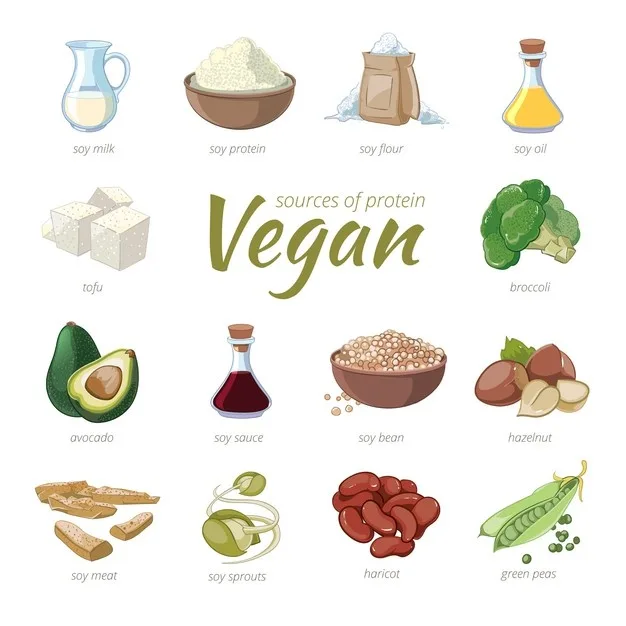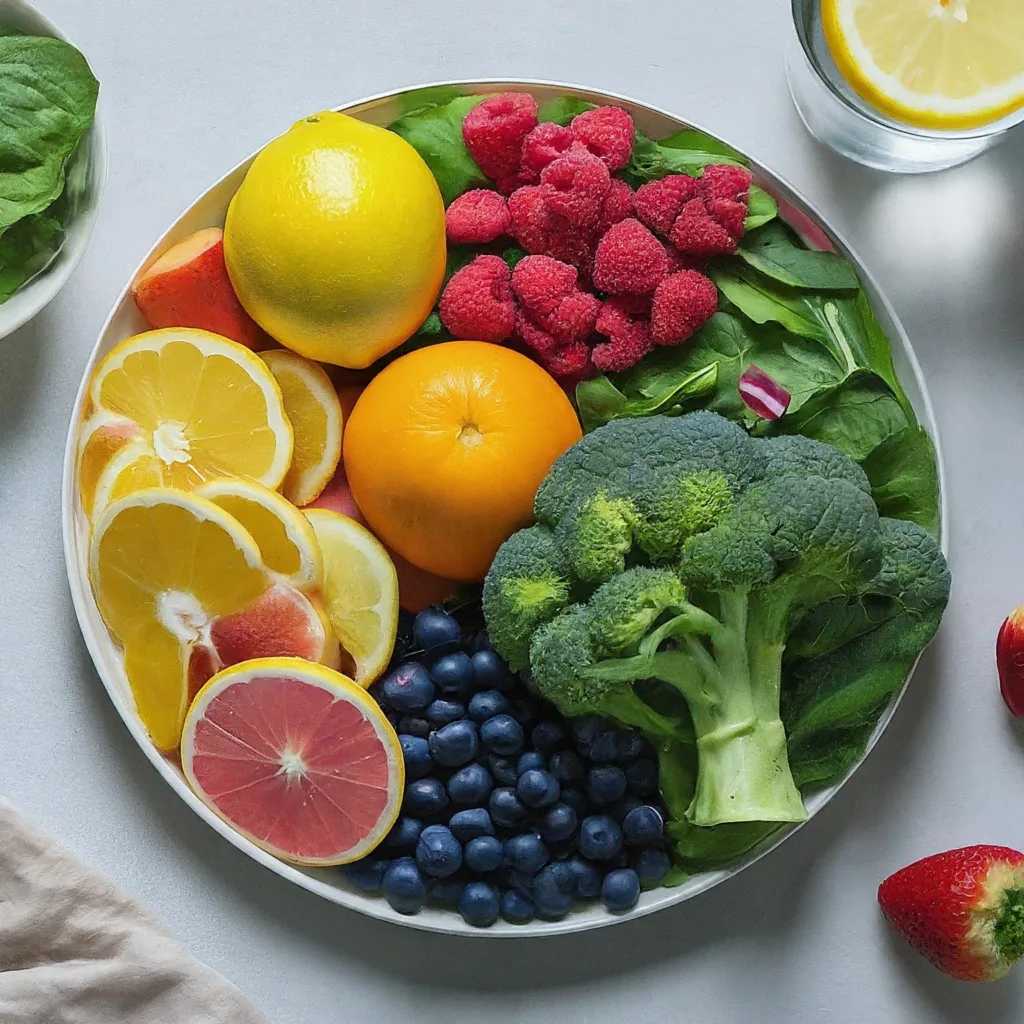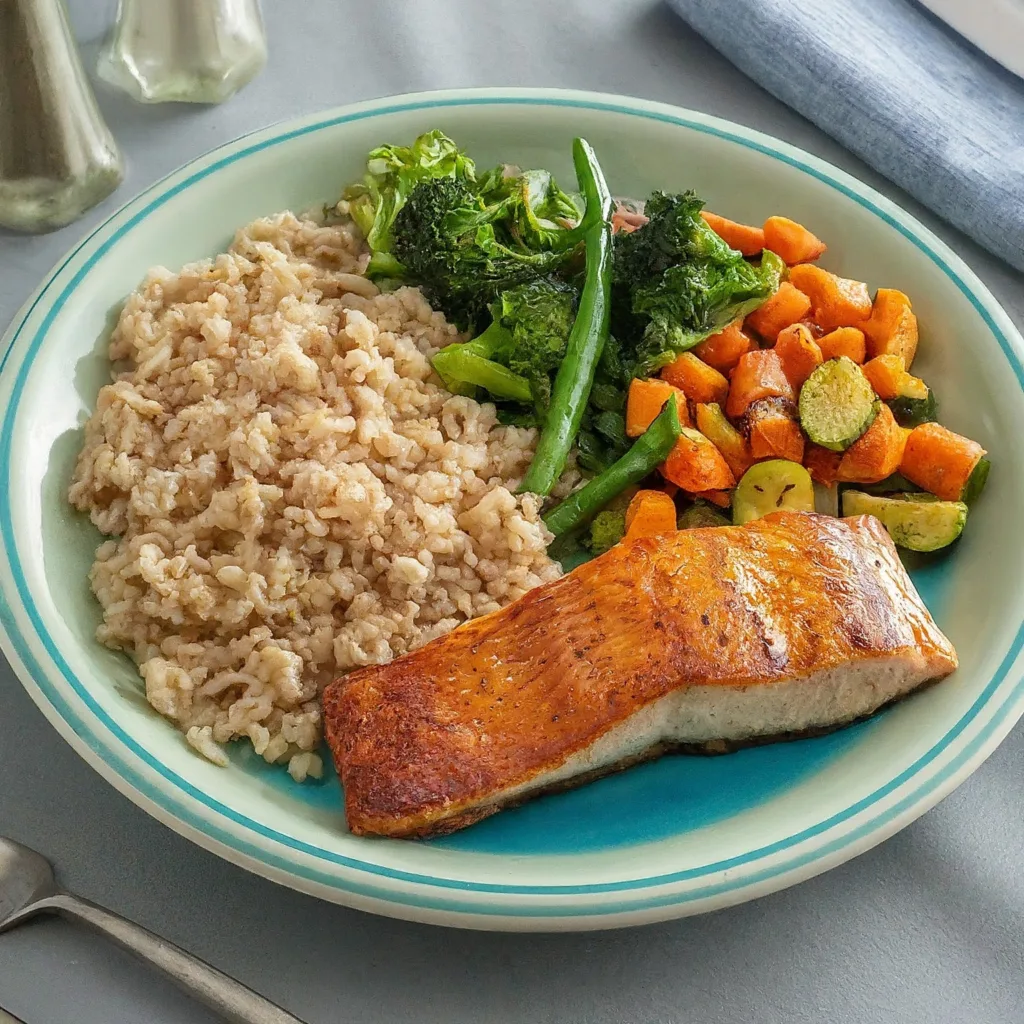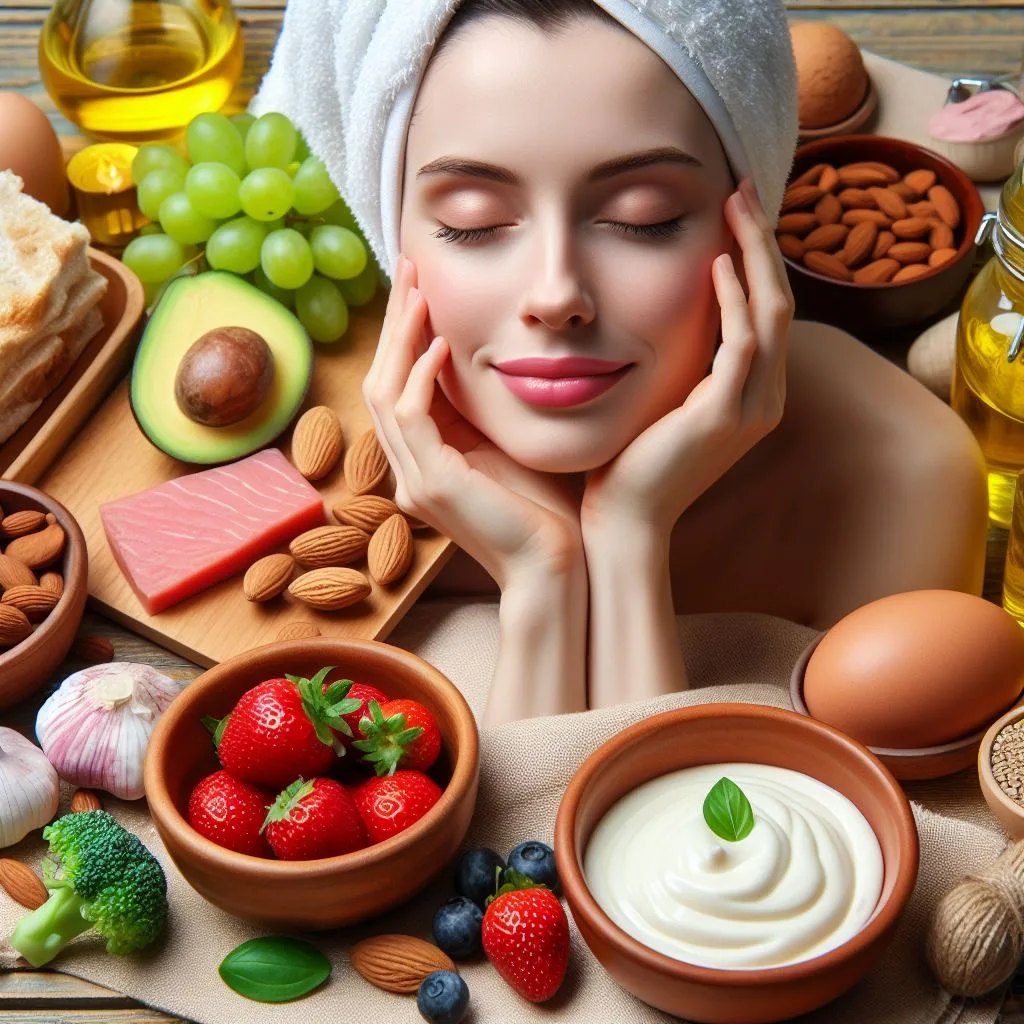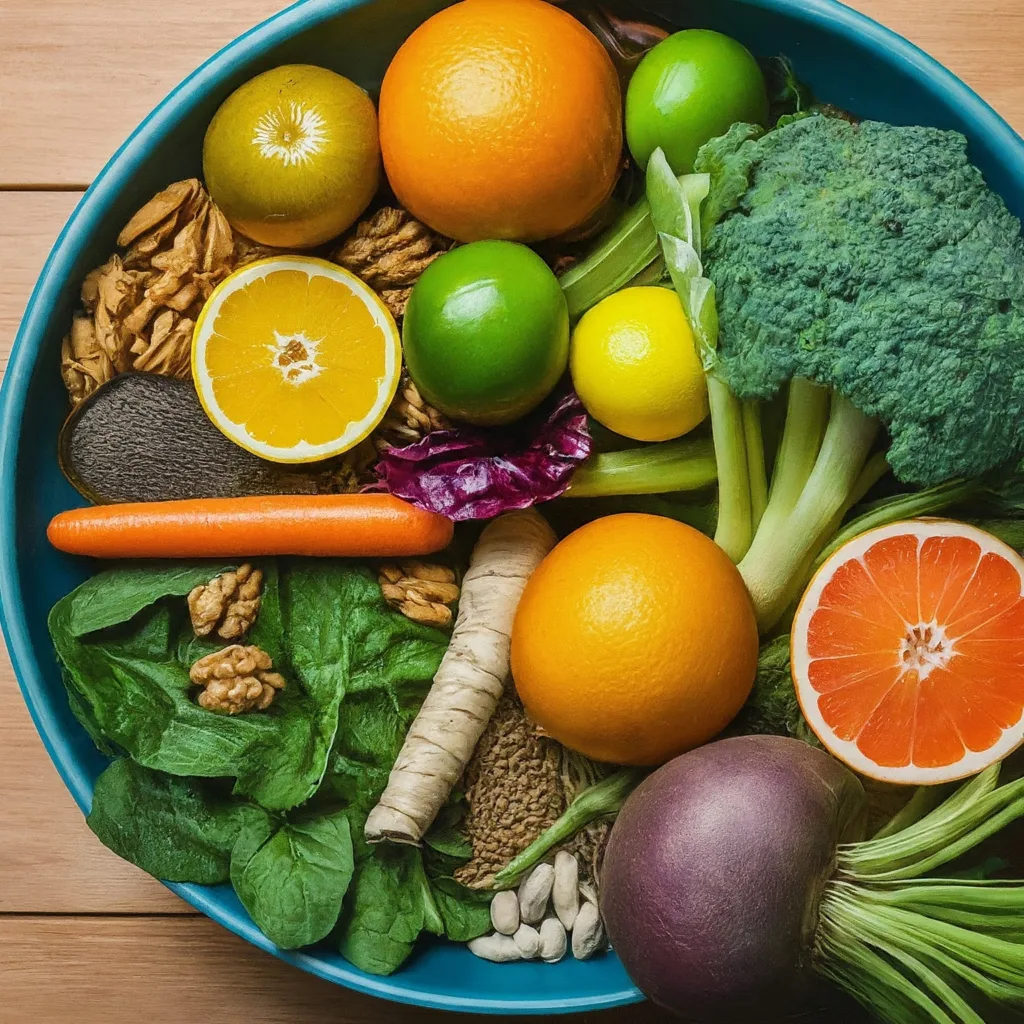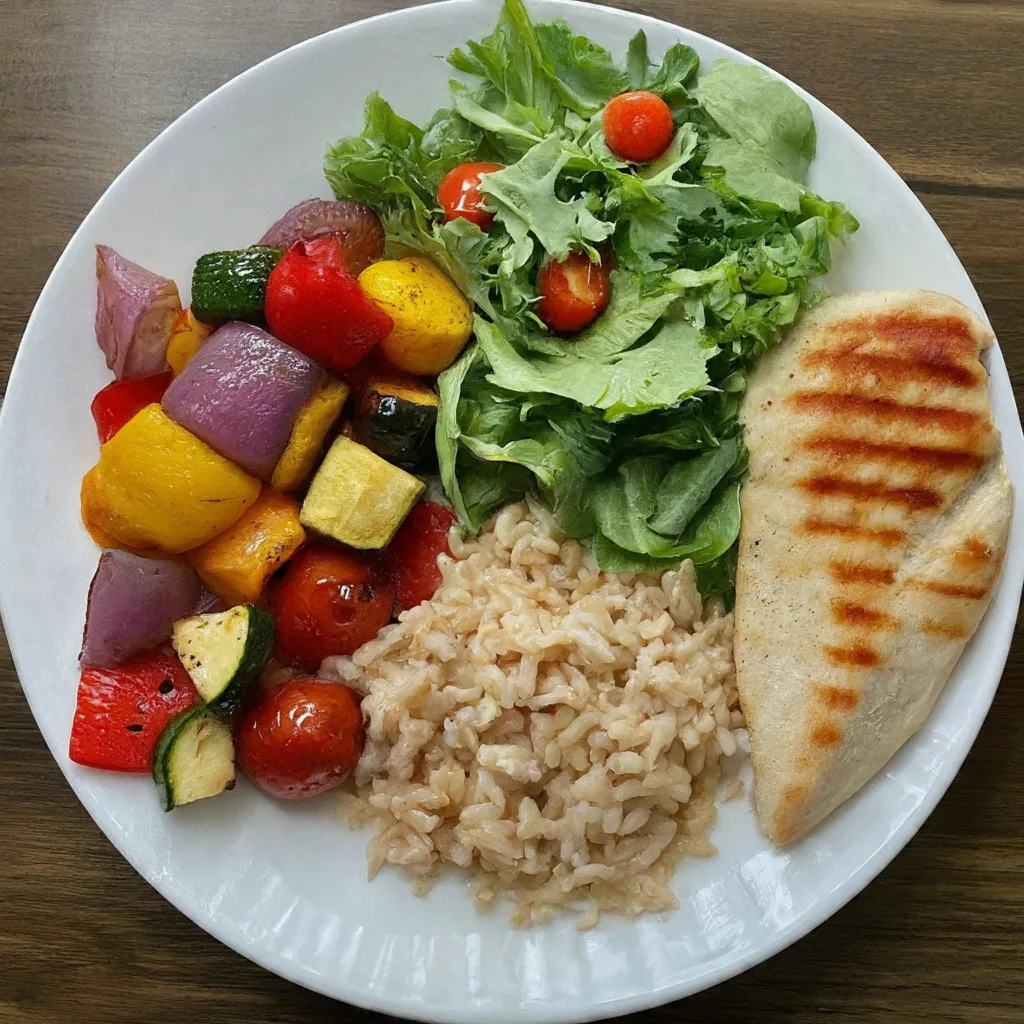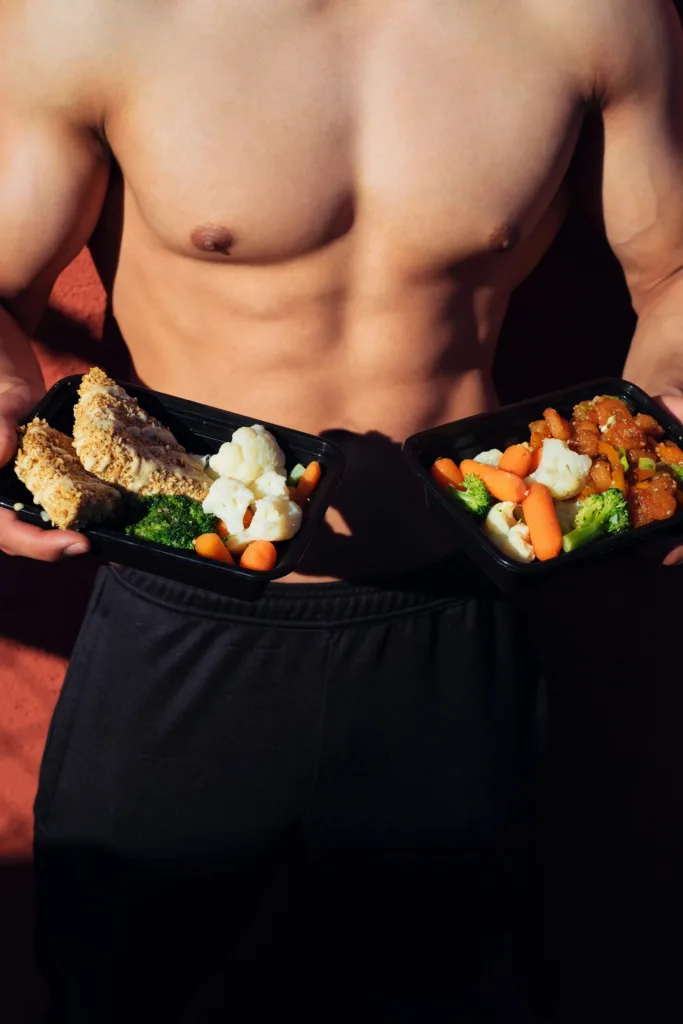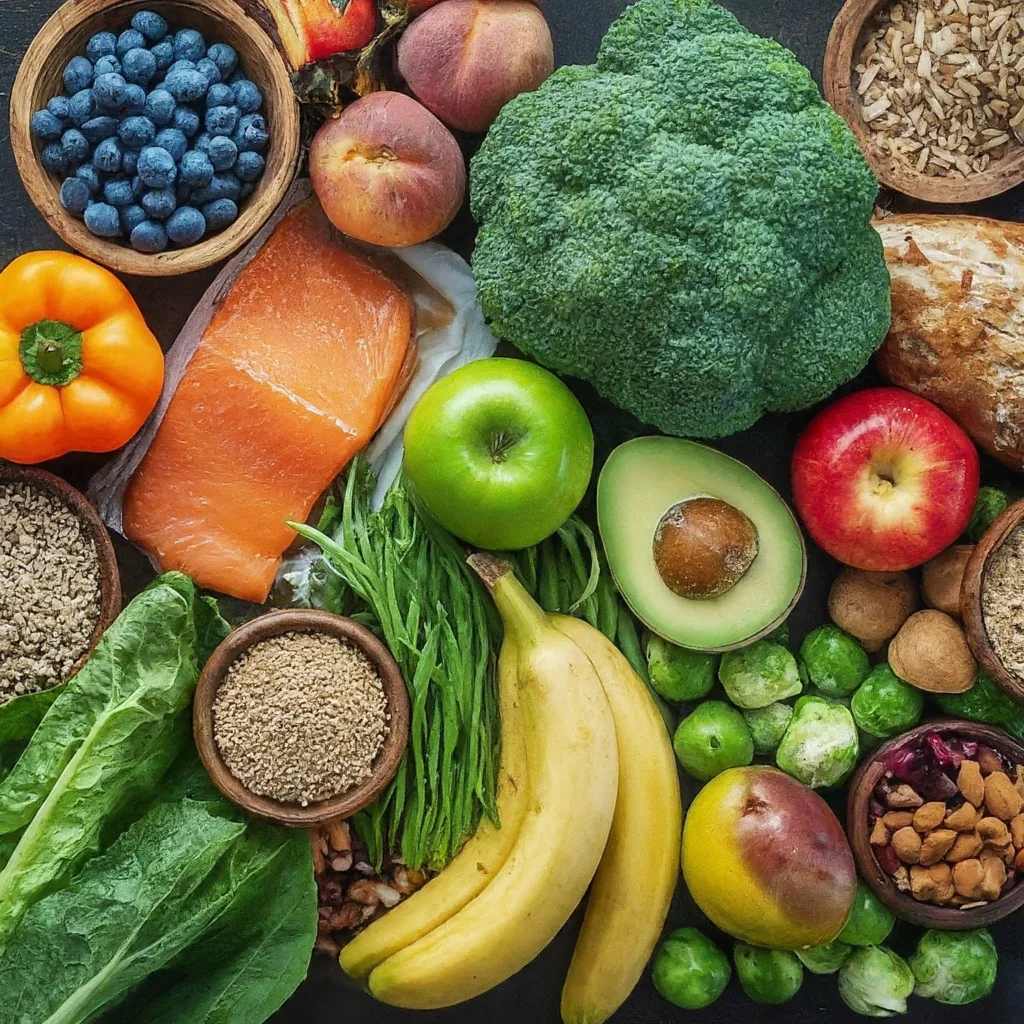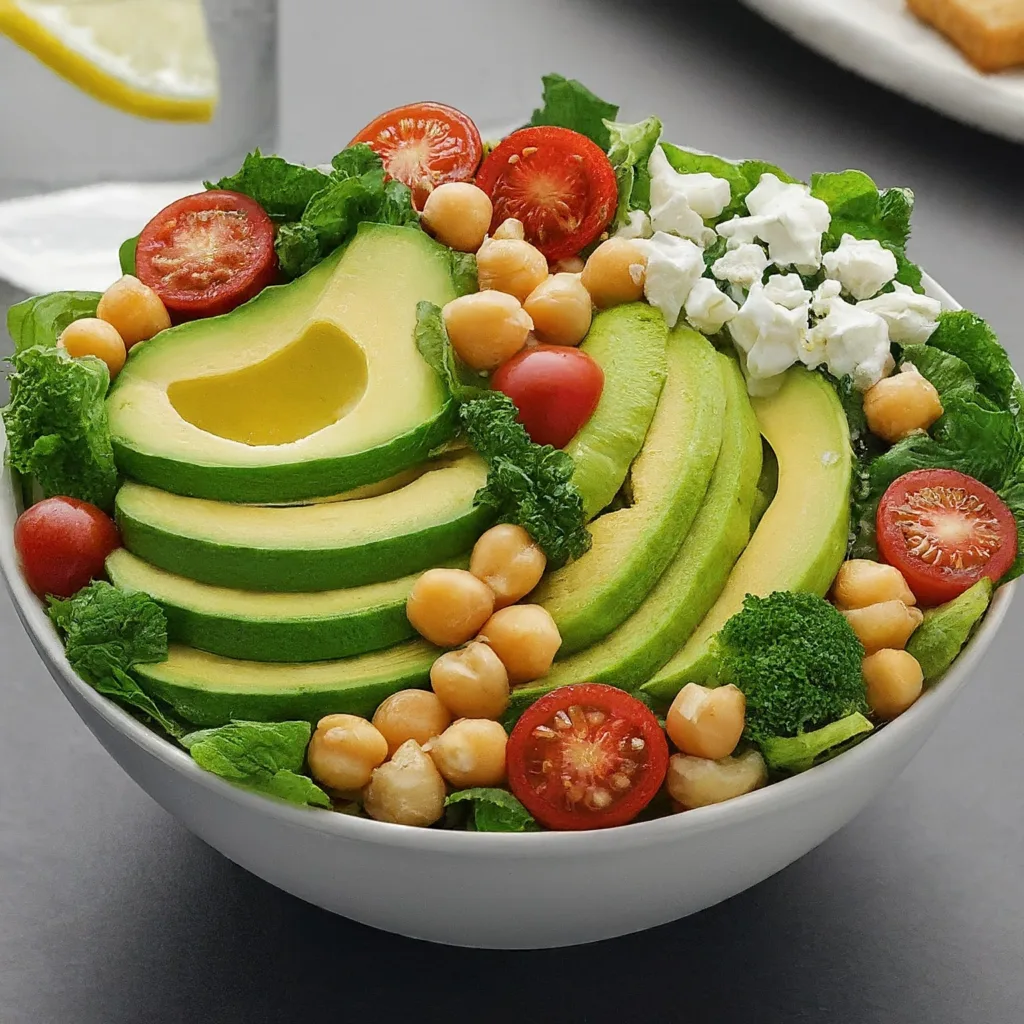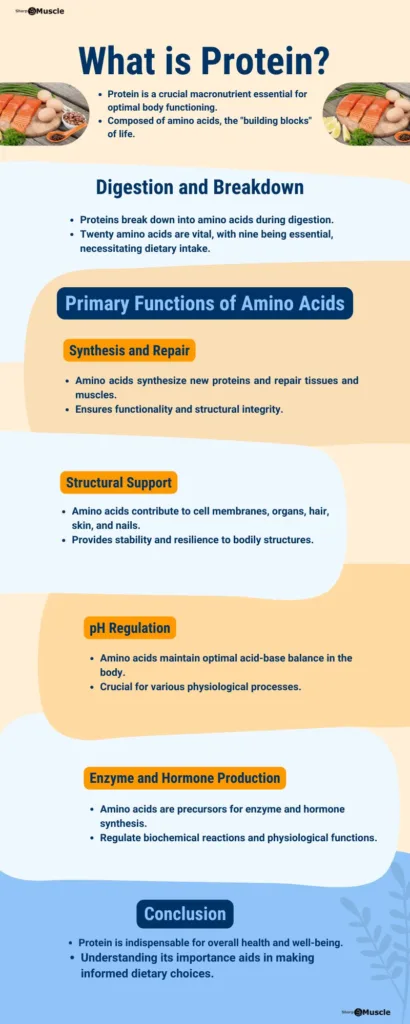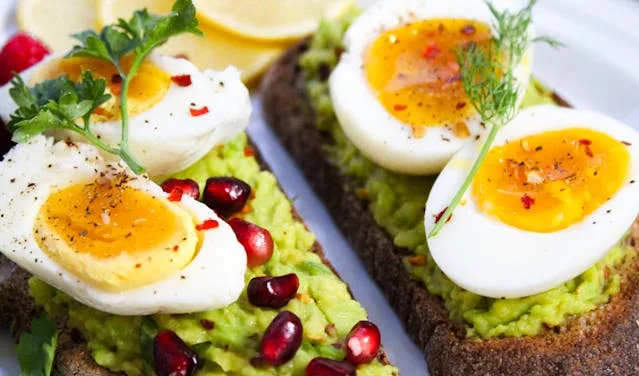How Vegans Get Protein – If you’re concerned that vegetarian and vegan diets may lack enough protein, you’re not alone. This article lists plant-based proteins, tips, menu plans and much more that will help you easily incorporate them into your diet plan.
Vegetarians or vegans avoid eating all animal products, including meat, eggs and dairy. They also do not consume food containing animal sources such as gelatin and honey.
Vegan or vegetarian lifestyle requires careful attention. A common concern about vegetarian and vegan diets is that it can be difficult to get enough protein, vitamins, and minerals, which are found in animal products.
Vegetarianism can be tried for a variety of reasons, including health, animal welfare and environmental concerns. According to the British Dietetic Association and the American Academy of Nutrition and Dietetics, a vegetarian or vegan diet can meet all of a person’s nutritional needs at any age.1
However, many experts agree that a well-planned meat-free diet can provide all the nutrients vegans need, including protein.2 3 4 5
Studies new and old show that some plant foods contain significantly more protein than others, and high-protein diets can promote muscle strength, feelings of fullness, and weight loss as well. 6 7 8
Proteins are one of the most important nutrients for our body. They also provide structural and functional support. Proteins also play a role in tissue growth and repair. Bones, blood, skin and muscles depend on these for stability.
On the other hand, people who do not eat meat or animal protein may find it difficult to get enough protein, essential vitamins and minerals. If a person wants to go on a vegetarian diet, he or she should plan for heart-health care of lentils. They also get enough protein, calcium, iron and essential vitamins from animal products in a non-vegetarian diet.
Since protein is an essential and vital component, it is no surprise that a high protein diet is highly recommended. However, because the human body cannot store protein on its own, it is important to consume enough protein on a daily basis. When protein is ingested, it is made up of amino acids. There are 22 amino acids in all, and maintaining the proper balance of each is essential to health.
How Can Vegans Get Protein?
Vegans and vegetarians are two groups of people who eat meat-free proteins. Vegetarians avoid all animal products, while vegetarians eat eggs and cheese. While eggs are nutritious and can be a good source of protein for vegetarians, those who rely on dairy for protein will be disappointed by the amount of saturated fat and sodium. Plant-based proteins such as legumes, whole grains, nuts and seeds are the only sources of protein for vegetarians.
When you don’t eat meat, the key to getting enough protein is to make sure you have some at each meal and snack. If you make wise decisions, you’ll find that meeting your needs isn’t too difficult.
Consider high-protein foods
Here are some high-protein foods to consider for each meal for the week:
Breakfast
- Avocado
- Walnuts
- Chia seeds
- Sweet potatoes
- Peanut butter
- Banana
- Oatmeal
- Tofu
- Whole-wheat toast
- Burritos
- Broccoli
- Tomatoes, spinach
- Apple
- Pumpkin seeds
- Broccoli
- Kale
- Avocado
Lunch
- Brussels sprouts
- Avocados
- Tomatoes
- Onions
- Beans
- Cilantro
- Chickpea
- Spinach
- Brown rice
- Asparagus
- Potato
- Lentils
- Hummus
- Tofu
- Black beans
Snacks
- Kale chips
- Bell peppers
- Seaweed crisps
- Mixed berries
- Vegan protein shake
- Walnuts
- Chia seeds
- Nuts
- Dried fruit
- Pistachios
- Homemade granola
- Coconut pudding with chia seeds
- Almonds
- Pumpkin seeds
- Fruit salad
Dinner
- Cauliflower
- Chickpea
- Green beans
- Oats
- Lentils
- Olives
- Pepper beans
- Peas
- Tomatoes
- Corn
- Bell peppers
- Onions
- Brown rice
- Artichoke
One-day Vegan Menu Packed with Protein
Still wondering how easy it is? Check out our one-day vegetarian menu is packed with protein;
Breakfast
Overnight oats with apple slices, pumpkin seeds, cinnamon and nut butter. Pumpkin seeds contain a good amount of protein while nut butter, oats also add a bit. Any nut butter would do. Almost all nut butters are packed with protein and heart-healthy fats. Keep in mind that they are high in calories, salt, and sometimes sugar.
Lunch
The protein in this Smoky Two-Bean Vegetarian Chili comes from both black and pinto beans. To add even more whole grain goodness, serve with cornbread on the side. To boost the protein content, you can also add leftover grains, such as quinoa.
Snack
Tofu is notorious for being flavorless, but soy sauce, rice vinegar and sesame oil help these tofu bites break down the mold. They can be eaten cold or hot, making them ideal for packing vegetarian snacks on the go. If you like your food spicy, add some chili powder or paprika. For an added layer of flavor, substitute hot Chile oil for some sesame oil.
Dinner
Tempeh is a firm soybean-based veggie protein that’s chewy and full of umami. It’s great for sandwiches, wraps, and loafs. It’s also insanely delicious, which is why we used it as a vegetarian meatloaf substitute in this Tempeh With Chard Peppers and Kale. As a bonus, tempeh meets your daily requirement for vitamins A and C.
What is an Animal Protein?
Animal protein describes the type of protein derived from animals. It may provide the body with all the required amino acids since it is a complete protein.
Fish, eggs, dairy products like cheese, whey, milk, and so on, as well as red meat and fowl, all contain animal protein. Animal protein, for instance, contains nutrients that are not found in plant protein.
The minerals in issue are heme-iron, vitamin B12, vitamin D, DHA, and zinc. Heme-iron is typically found in red meat and is easily absorbed into the body, unlike non-heme-iron found in plant protein. Seafood, pig, chicken, and dairy products all include vitamin B12. Oily fish, eggs, and dairy items all contain vitamin D.
DHA is an omega-3 fatty acid that is found mainly in oily fish.
Beef, pork, and lamb are the most common causes of zinc.
Despite having a complete protein, red meat, for instance, is a primary cause of heart disease, stroke, and premature mortality.
What is Plant Protein?
Plant protein is a form of protein that comes from plants. It is an incomplete protein because it does not contain one of the essential amino acids.
Grains, lentils, nuts, beans, legumes and some fruits, such as avocados, are all good sources of plant protein. On the other hand, protein sources such as quinoa and buckwheat are complete proteins.
Plant proteins also contain phytonutrients such as antioxidants. It is also low in saturated fat but high in unsaturated fat. As a result, plant protein is good for your health and may help you avoid heart disease.
Plus, plant proteins are always high in fiber, which helps keep the digestive system under control. It also contains non-heme iron, which the body has a hard time absorbing. Therefore, plant protein is a preferable option for vegetarians.
Animal vs Plant Protein
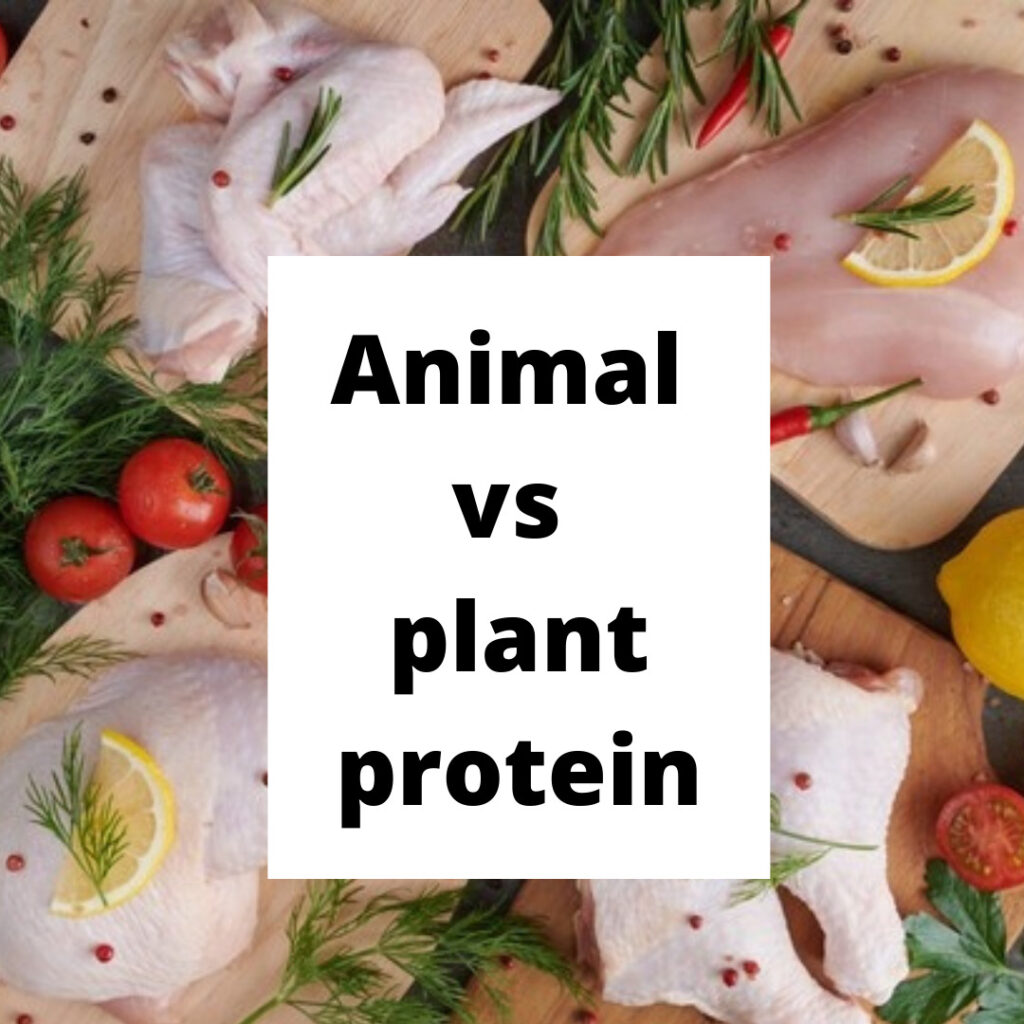
When it comes to protein content, most plants cannot compete with animal proteins. This is because most vegetarian protein sources also contain fat or carbohydrates, making them less protein-dense.
On the other hand, plants are high in fiber, vitamins, minerals and healthy fats, which make them a good source of beneficial nutrition in addition to protein. Vitamins C, A, and E, as well as folate and magnesium, are low in animal protein but plentiful in plant sources. In addition, most plants are free of cholesterol and saturated fat.
On the other hand, plant-based diets tend to lack vitamin B12, which can only be obtained from animal sources. Animal-based proteins also contain high levels of zinc, vitamin D, omega-3 fatty acids, eicosapentaenoic acid (EPA), and docosahexaenoic acid (DHA).
Heme-iron, which comes from a protein (hemoglobin) in red blood cells and is more easily absorbed than non-heme iron, is also found in animal protein. Non-heme iron can be found in both plants and animals, while heme-iron is found only in meat and shellfish, especially red meat.
It is worth noting that, while both animal and plant proteins have been associated with positive health outcomes, there is no evidence that plant-based proteins harm health, but some animal proteins are.
Plant proteins seem to be the clear winners when we consider this element in general. However, when it comes to specific animal proteins such as fatty fish and some dairy products, animal proteins can provide considerable and distinct benefits.
Focus on the quality of your protein selection, as both plant and animal foods can provide many health benefits when consumed as part of a balanced, nutrient-dense diet.
What is veganism?
All vegetarian diets rely heavily on plant foods such as vegetables, fruits, nuts, legumes and grains. Depending on the type of vegetation diet, animal food sources such as milk, yogurt and eggs may be incorporated. Some vegetarians occasionally eat dairy products, eggs and even fish.
Vegetarianism is the strictest type of vegetarianism, as it requires the avoidance of all animal products, including less obvious products such as gelatin, butter, mushrooms and even honey.
What does a vegan eat?
A vegetarian diet consists of only plant-based foods, including all vegetables, legumes, lentils and peas; Nuts, seeds, fruits, grains and soy products such as tofu.
As we have learned, all vegetarian diets consist only of plant foods. A well-planned vegetarian diet can meet the average person’s needs for protein and most essential nutrients. However, some consideration is needed to ensure that all protein sources from plants can complement each other to supply essential amino acids.
- https://www.bda.uk.com/resource/british-dietetic-association-confirms-well-planned-vegan-diets-can-support-healthy-living-in-people-of-all-ages[↩]
- J Acad Nutr Diet. 2016 Dec;116(12):1970-1980. DOI: 10.1016/j.jand.2016.09.025. Position of the Academy of Nutrition and Dietetics: Vegetarian Diets[↩]
- BJOG. 2015 Apr;122(5):623-33. DOI: 10.1111/1471-0528.13280. Epub 2015 Jan 20. Vegan-vegetarian diets in pregnancy: danger or panacea? A systematic narrative review[↩]
- Is iron and zinc nutrition a concern for vegetarian infants and young children in industrialized countries? Rosalind S Gibson, Anne-Louise M Heath, Ewa A Szymlek-Gay; The American Journal of Clinical Nutrition, Volume 100, Issue suppl_1, July 2014, Pages 459S–468S, https://doi.org/10.3945/ajcn.113.071241[↩]
- J Int Soc Sports Nutr. 2017 Sep 13;14:36. DOI: 10.1186/s12970-017-0192-9. eCollection 2017. Vegan diets: practical advice for athletes and exercisers[↩]
- Food Funct. 2016 Mar;7(3):1251-65. DOI: 10.1039/c5fo01530h. Dietary protein intake and human health[↩]
- Mo Med. 2014 Jan-Feb; 111(1): 54–58. PMCID: PMC6179508; PMID: 24645300; Increased Dietary Protein as a Dietary Strategy to Prevent and/or Treat Obesity[↩]
- Am J Clin Nutr. 2005 Jul;82(1):41-8. DOI: 10.1093/ajcn.82.1.41. A high-protein diet induces sustained reductions in appetite, ad libitum caloric intake, and body weight despite compensatory changes in diurnal plasma leptin and ghrelin concentrations[↩]


